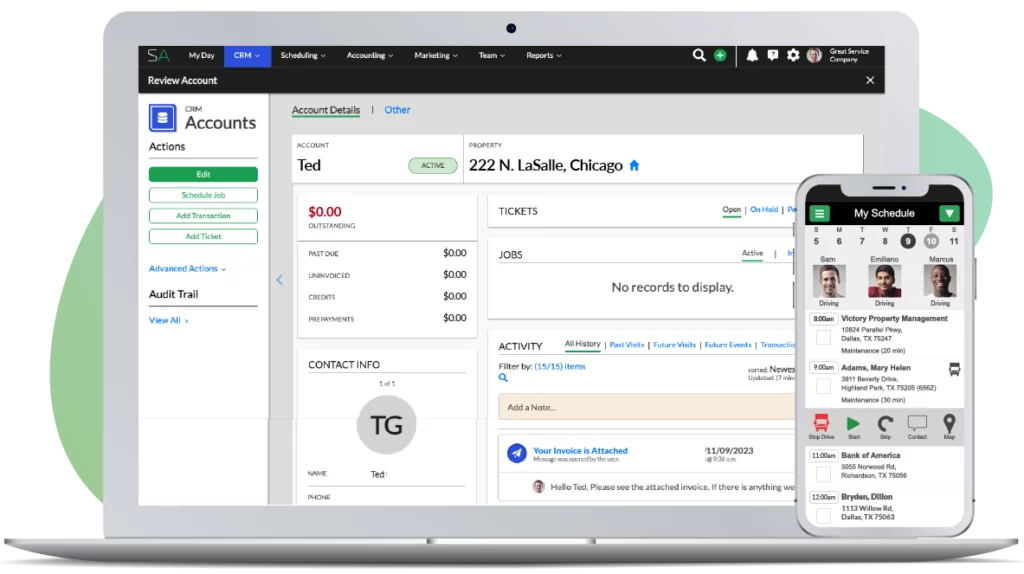Increase conversion rate by 100%.
Improving the sales conversion rate of your landscape maintenance and lawn care prospects by 100% is ridiculously ambitious. The point is… increasing your conversion rate will have a huge impact on sells. Stop wasting so much time meeting with prospects that will never close.
The first step… learn this key tip to increase conversion rate and decrease the amount of time you waste selling to prospects that will never buy.
When selling to residential or commercial clients, this one tip will dramatically increase conversion rate and immediately save you a huge amount of time in the selling process. It’s one very simple tip. You need to know, when you are selling, who the decision-maker is. It’s very common that you are initially approached, or initially deal with, an individual that is doing nothing more than gathering information.
That person is generally uninformed about exactly what the real decision-maker wants or needs or what their tastes and desires are. What often happens is when you are approached by this individual, and they give you the details, they’re generally giving you nothing more than bid spec. You find out what they want based on a sheet of paper and a sheet of punch items that this individual wants.
You don’t hear, because you don’t get to talk to this person, what their real decision-making criteria is. You don’t get to hear about the problems they’ve been having on the property with the prior vendor. You don’t get to hear that to them, the most important spot on the entire property is the entrance, or the most important spot in the entire property is the 10 giant flower pots in the front as you approach the multi-story building that have ornamental trees or huge flower arrangements. You don’t hear that in those 10 pots, because they’re not irrigated, they’re constantly replacing those flowers and it constantly looks bad.
You don’t know that’s their selling point because you spoke with someone that wasn’t the decision-maker. You don’t hear the little clue that this person is really collecting four bids to comply with corporate office, but he likes the company that they have now. He doesn’t usually directly tell you that, but you don’t have any possible way to pick up on this. You don’t find out what his buying criteria is. Everyone has buying criteria.
When you’re having a conversation, you need to ask the individual which parties, or whom exactly will be involved in making this final decision. Is it a board that votes on this? Are you and a purchasing manager? Are you and your spouse? Or are you and someone else going to make this decision together? Who is it that might veto this decision? For example, are you the final decision-maker or is it you and someone else? Because, that someone else may have veto power. It’s very important.
A lot of times, in the sales process and in different industries, there might be someone that qualifies the leads and they go out and get the leads. Their job is basically to get leads and qualify those leads. They are to identify the decision-makers, identify the buying criteria, capture the key information, and basically verify that this lead is worth pursuing and that they are high-probability leads. So, the closer, the second person in the sales process, the guy that really comes in with the power and the knowledge that can get the deal closed does not waste any time whatsoever.
This is really important to understand. Your job, because you might be doing all sides of the sales process, is to qualify first, to make sure you have all parties so you don’t waste all of your time. Then, to understand what your real selling criteria is, or the buying criteria of the individual that you’re dealing with. So that again, you’re not wasting your time doing measurements and estimates for something that you’ll really never have a chance of winning.
Also, when you do present, so that the massive amount of time you spent putting together this proposal, you can spend the extra 30 minutes crafting it around the five buying criteria of the real decision-maker. In summary, you need to make sure that you know who the real decision-makers are. You need to deal with the real decision-makers.
That doesn’t mean you have to deal with them all the time. But, if you’re going to give a proposal, you need to have them involved for at least some period of time, so that you can make sure you’re truly delivering what they want so that your bid has a chance of being considered. You need to filter down exactly who’s involved in the buying process. You need to understand their buying criteria. You need to then present a crafted message proposal around that buying criteria.
If you skip those steps, you massively hurt your close percentage, and you massively waste a huge amount of your time. Think about your time from the 80/20 principle. You want to spend the maximum amount of your time on the highest probability sales. It is a waste of your time to spend your time on the low stuff because you’ll never sell it. Therefore, you’re not able to apply your time to the high probability sales.
The way you make a greater amount of money as a company or a sales person is to spend as much of your time as actually possible on the people that really are going to close. That means you’re spending time with decision-makers. If you think about it from that perspective, you’ll save yourself a lot of pain and heartache and you greatly increase your revenue.


